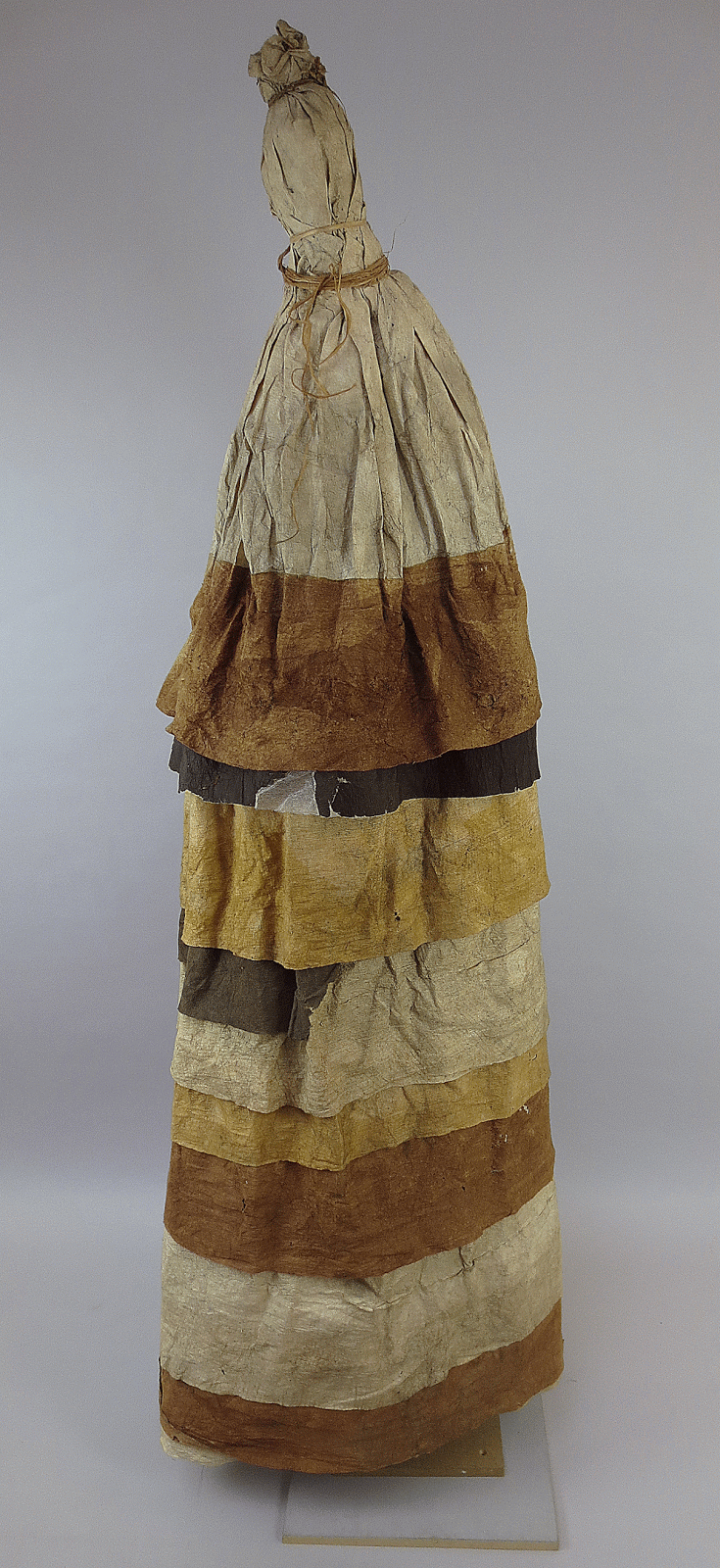For the last few weeks, we've been working with Rachael Lee from the Textiles Conservation section at the Victoria and Albert Museum to help us make a mount for the Tahitian Mourner's costume. The costume will be one of the highlights of the new display of Cook-voyage objects which will open in 2015. The new display case which will house this exhibition is being installed this week in the Lower Gallery of the Pitt Rivers, and the re-mounted Mourner's costume will use almost the entire 2.7m height of this case.
A few months ago, I blogged about
finding a strip of barkcloth in one of our stores which I was sure was part of the Mourner's costume headdress. Once in the lab, it was possible to confirm that this was the case - the strip was exactly the right length to fit back on the cape in the expected position.
 |
| Barkcloth strip before conservation treatment |
 |
| Expected position of black strip |
The barkcloth was very fragile, and couldn't be handled without damage. It was necessary to line the strip with very fine Japanese tissue, a strong paper with long fibres, leaving a tab at the top to attach to the white barkcloth under-layer of the cape. The adhesive used for this was a made from arrowroot and sodium alginate - it is a fairly 'dry' paste but strong enough to support the strip when hanging from the cape. Small magnets were used to hold the barkcloth in place until the paste was dry.
 |
| Small magnets holding the tissue tab at the top of the black barkcloth strip in position |
The two parts of the cape have been reunited after 120 years - one thing that is more noticeable now is the extent to which the barkcloth of the cape has faded after being on display almost continously for almost 250 years, compared with the black strip which has been in storage.
 |
| Cape after treatment |




